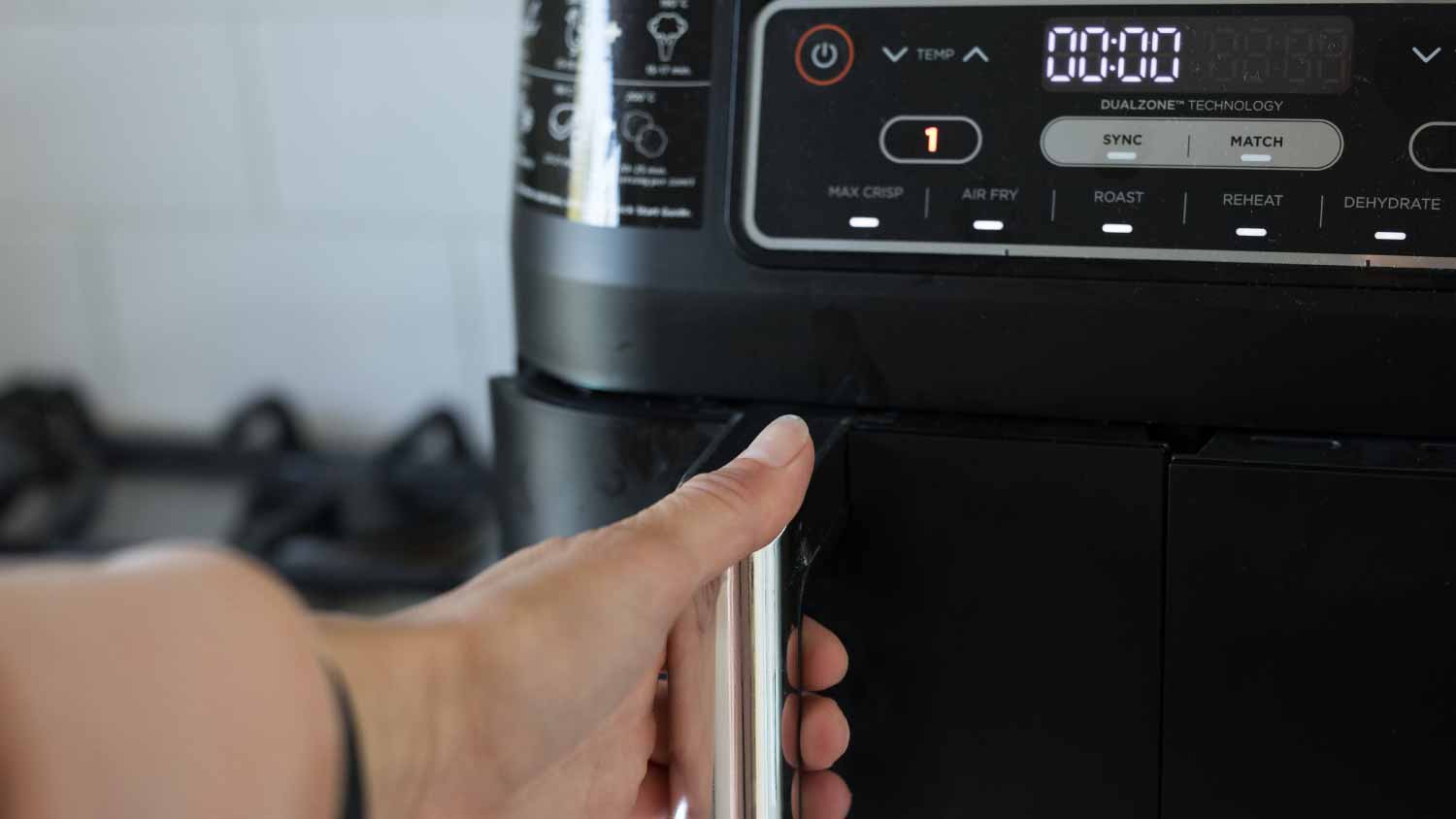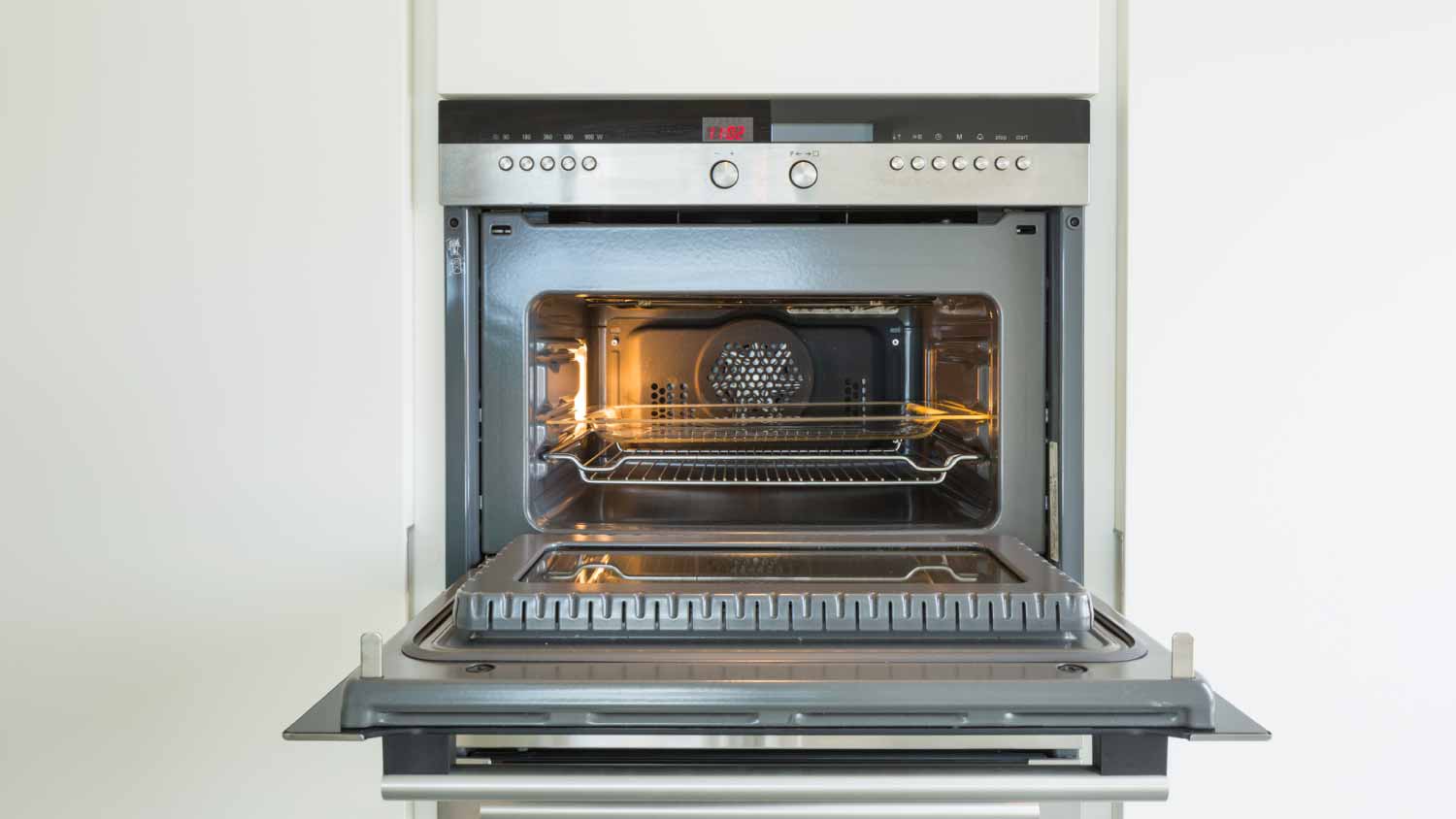
Discover the cost to install washer and dryer hookups. Learn about price factors, labor, materials, and tips to save on your laundry room project.
Fry me to the moon


Air fryers are typically standalone countertop appliances with one function.
Some convection ovens have air fryer functionality.
Convection ovens are much more expensive than air fryers, typically starting at $800.
Air fryers do not hold much food; convection ovens can cook several dishes at once.
Air fryers are the latest kitchen gadgets that everyone is talking about—and for good reason. Who wouldn’t want to enjoy healthier French fries at home? However, while shopping for an air fryer, you might find that a convection oven offers similar functionality and could be a better fit for your kitchen. Learn the pros and cons of each appliance to decide which is best for your next wing night.
Air fryers and convection ovens use similar technology to cook food, but they are different in a few ways. Air fryers are most often seen as standalone, countertop appliances, which are affordable but don’t accommodate much food. Convection ovens, on the other hand, are large and can cook multiple food items at once.
In addition, standalone air fryer units can be a pain to clean, even if you’re only using minimal oil. Convection ovens are not only easier to clean, but many new models come with self-cleaning functionality.
Finally, some foods are not ideal for air fryers—leafy greens, for instance. With convection ovens, almost any food is fair game, though delicate foods like soufflés often benefit from a traditional oven.
Some modern ovens have air fryer functionality built in, which is basically convection cooking with proper cookware.

Air fryers use the power of hot air to cook food. A fan circulates the air throughout the machine, and because food is placed in a perforated tray or basket, all its surface areas are exposed to the hot air, allowing it to get crispy on all sides without having to be deep fried in oil.
There are different types of air fryers available:
Standalone models: These air fryers are single-use units. They are usually oval-shaped and have a basket where you place your food to be cooked. Most homeowners place them on a countertop; they plug into a standard wall outlet.
Countertop ovens with air frying functionality: Some countertop ovens have multiple functions, including baking, roasting, toasting, and air frying. These are usually small convection ovens with air fryer baskets and a “super convection” setting.
Oven range with air fryer: Some new oven ranges have air fryer capabilities and air fryer baskets. Like the countertop oven, these ranges usually rely on “super convection” settings to air fry.
Air fryers can cook almost any food, but most people use them to cook firm vegetables such as zucchini or cauliflower as well as proteins like salmon, tofu, or shrimp.
| Pros | Cons |
|---|---|
| Cooks food fast | Not suitable for all foods |
| Crisps food evenly | Prone to overcooking food |
| Cooking requires less oil than traditional frying | Small capacity is not ideal for large households |
| Standalone air fryers take up valuable counter space |
Best for:
Health-minded homeowners on a budget
Households with one or two people
Most people buy air fryers because they want to simulate the taste and feel of deep-fried food without the health implications. Air-frying requires little to no oil, which is healthier for your heart.
Air fryers also cook food very fast, which can be useful if you work long hours or need to whip up a quick snack for your kids after school.
Finally, standalone air fryers are affordable. A simple one costs $50 or less. For someone looking to cook with less oil and in less time, an air fryer can be a lifesaver.
Air fryers are great if you need to cook for one or two people, but standalone units can’t usually accommodate servings for larger households. In addition, you can only cook one food at a time, so you’d need to cook your side dishes, dessert, etc., in your conventional oven or another way.
Some homeowners might also frown at the thought of another appliance taking up valuable countertop space. If you’ve already got an electric pressure cooker, a toaster, and a blender, adding another item might look cluttered.
Finally, some foods aren’t suitable for air fryers: leafy greens tend to dry out, and battered or cheesy items tend to make an enormous mess.

A convection oven has a fan and exhaust system that traditional ovens do not. This system blows hot air onto food, then vents it back out. Many ovens at your local appliance store now come outfitted with a convection setting, allowing you to switch between conventional cooking and convection cooking with the push of a button. Convection cooking is typically drier, cooking food about 25% faster than a conventional oven.
Convection cooking is typically used to bake and roast at faster speeds, but it does not simulate deep frying as closely as an air fryer does.
| Pros | Cons |
|---|---|
| Cooks food faster than conventional ovens | More expensive than conventional ovens or air fryers |
| Can cook multiple foods at the same time | Learning curve; cook times often need to be adjusted |
| Excellent for baked goods | Can overdry food |
| Energy efficient |
Best for:
Larger households that need to cook bigger meals or multiple dishes at once
Homeowners who love to bake
Homeowners looking to save on their energy bill
Convection ovens cook foods very quickly. Because they cook up to 25% faster than conventional ovens, you might find that you save money on your energy bill by running your oven for less time.
Because convection ovens circulate air around your food, they cook food very quickly and eliminate the need for you to rotate any pans in the oven. They help to maintain a crisp and crunchy exterior on foods while maintaining a juicy, tender interior—this makes them ideal for roasting meats and for baking.
There are some ways to “hack” your convection oven and make it function more like an air fryer, such as using perforated baskets and flipping food halfway through the cooking time. This is what most oven manufacturers mean when they say their convection ovens have air fryer capabilities. That said, standalone air fryers tend to do a better job of replicating the texture of deep-fried food because the food is in closer proximity to the circulating hot air.
Convection ovens are more expensive than air fryers or conventional ovens, costing between $1,400 and $3,000 on average, including installation—make sure to talk to an appliance installation company near you to get a quote. Air fryers are considered affordable, countertop appliances, with top-of-the-line models costing around $200 or $300.
In addition, using convection ovens requires a learning curve. Because they preheat faster, cook faster, and distribute heat more evenly, most recipes must be adjusted with lower temperatures and shorter cook times. Most home chefs need some trial and error to get it right.
While an air fryer cannot be a convection oven, a convection oven can act like an air fryer. This is one core difference between the two appliances, but there are several more to consider before you make a purchase.
While convection ovens look like conventional ovens (and often are), which can be visually appealing, air fryers are often standalone countertop units. Lower-priced models tend to be less attractive, usually black and egg-shaped, but in recent years some companies have designed better looking models that would look at home in any stylish kitchen.
Standalone air fryers have one purpose: to air fry. A large convection oven usually comes with a cooktop, WiFi capabilities, air fryer functionality, a broiler, and much more.
Air fryers can cost as little as $50, and sometimes less. You can throw one into your backseat or truck after a trip from Target and plug it in as soon as you get home. A standard convection oven will run at least $800, not including delivery and transportation. The average cost to install a wall oven or built-in oven ranges from $800 to $3,200, with a national average of $2,000.
Air fryers can be a pain to clean. While most air fryer recipes require little oil, oil can still build up in the unit and require regular deep cleaning. Many newer convection ovens have self-cleaning functions.
While the life span of tabletop appliances varies based on frequency of use and other factors, it’s estimated that air fryers last between three and five years, while convection ovens have life spans of 15 years or more.
From average costs to expert advice, get all the answers you need to get your job done.

Discover the cost to install washer and dryer hookups. Learn about price factors, labor, materials, and tips to save on your laundry room project.

Discover the average ice maker repair cost, key price factors, and tips to save. Learn how to budget for your ice maker repair and when to repair or replace.

Explore the common types of oven repairs and how much they cost based on the problem, the part, and the type of oven. This guide will tell you the average cost to repair an oven.

Discover why your pellet stove is not igniting and learn effective troubleshooting tips to fix the issue. Keep your home warm with our expert advice!

Calibrating your oven is usually a simple task you can do in less than an hour. Read here to learn how, no matter what type of oven you have.

Not sure if you should repair or replace your cooktop? Our guide helps you make the right decision for your appliance.